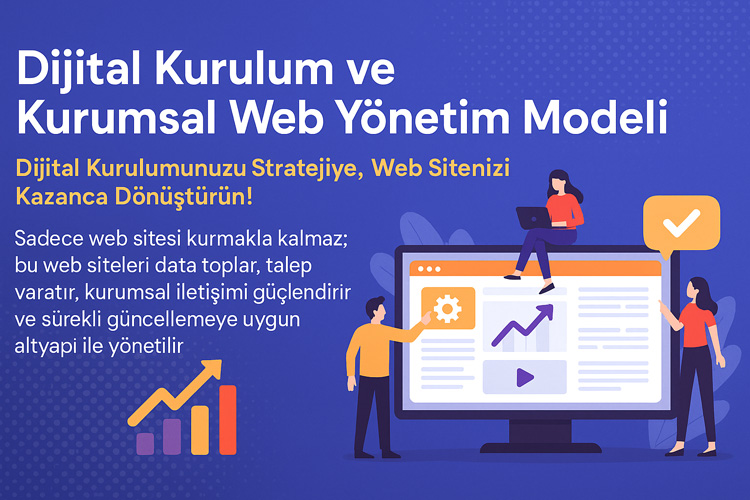PESTEL analysis is a strategic management tool that helps businesses systematically analyze their external environment. This analysis allows businesses to evaluate political, economic, social, technological, environmental and legal factors. These factors are external factors that can directly affect the activities and future strategic decisions of businesses.
One of the most important advantages of PESTEL analysis is that it offers businesses a broad perspective. Political factors include elements such as government policies, taxation, trade tariffs, and political stability. These factors evaluate the political situation of the environment in which businesses operate and their impact on it. Economic factors include economic factors such as inflation rates, interest rates, exchange rates, and economic growth. These factors help businesses determine their financial performance and financial strategies.
Social factors include elements such as demographic shifts, consumer behavior, cultural trends and lifestyle changes. These factors help businesses understand their target markets and shape their marketing strategies. Technological factors evaluate technological developments, innovations, R&D activities and the impact of technology on businesses. These factors show how businesses can innovate to increase their competitiveness.

Environmental factors include elements such as environmental laws, sustainability policies, climate change and environmental responsibilities. These factors are important for businesses to reduce their environmental impact and adopt sustainable business practices. Legal factors include factors such as laws, regulations, occupational safety and consumer rights to which businesses are subject. These factors ensure legal compliance and risk management of businesses.
When performing a PESTEL analysis, it is important to carefully consider the potential impacts of each factor on the business. It is also critical to regularly update analysis results and adapt to changing external environmental conditions. By using PESTEL analysis as a regular tool in their strategic planning, businesses can be better prepared for future uncertainties. This analysis helps businesses minimize risks and maximize opportunities. It also enables businesses to achieve their long-term goals and achieve sustainable success.
PESTEL analysis can be applied in various sectors and business types. For example, by performing PESTEL analysis in different areas such as the healthcare sector, automotive sector and technology sector, opportunities and threats specific to each sector can be determined. In this way, businesses can better understand sectoral dynamics and shape their strategies accordingly. This analysis is an important tool that helps businesses better understand their external environment and make strategic decisions.
İçindekiler
Adapte Dijital’in 10 yıllık deneyimiyle geliştirilen bu model, kurumsal web sitenizi sadece tasarlamakla kalmaz;
onu data toplayan, talep yaratan, kurumsal iletişim sağlayan bir dijital yönetim altyapısına dönüştürür.
Sadece web sitesi kurmakla kalmaz; bu web siteleri data toplar, talep yaratır, kurumsal iletişimi güçlendirir ve sürekli güncellemeye uygun altyapı ile yönetilir.
Definition and Importance of PESTEL Analysis
PESTEL analysis is a strategic management tool that helps businesses systematically analyze their external environment. PESTEL is an acronym consisting of the initials of Political, Economic, Social, Technological, Environmental and Legal factors. This analysis allows businesses to make strategic decisions by taking environmental factors into account.
Political factors include elements such as government policies, taxation, trade tariffs, and political stability. These factors evaluate the political situation of the environment in which businesses operate and their impact on it. For example, political stability in a country allows businesses to operate in a safe and predictable business environment. 🤝
Economic factors include factors such as inflation rates, interest rates, exchange rates and economic growth. These factors help businesses determine their financial performance and financial strategies. For example, high inflation rates can increase businesses’ costs and negatively impact profitability. 💹
Social factors include elements such as demographic shifts, consumer behavior, cultural trends and lifestyle changes. These factors help businesses understand their target markets and shape their marketing strategies. For example, an aging population may increase the demand for healthcare services. 👥
Technological factors evaluates technological developments, innovations, R&D activities and the impact of technology on businesses. These factors show how businesses can innovate to increase their competitiveness. For example, a new software technology can increase the operational efficiency of businesses. 💻
Environmental factors include elements such as environmental laws, sustainability policies, climate change and environmental responsibilities. These factors are important for businesses to reduce their environmental impact and adopt sustainable business practices. For example, the use of green energy may increase to reduce the carbon footprint. 🌿
Legal factors include elements such as laws, regulations, occupational safety and consumer rights to which businesses are subject. These factors ensure businesses’ legal compliance and risk management. For example, occupational safety laws are important to ensure the safety of employees. ⚖️
When performing a PESTEL analysis, it is important to carefully consider the potential impacts of each factor on the business. It is also critical to regularly update analysis results and adapt to changing external environmental conditions. By using PESTEL analysis as a regular tool in their strategic planning, businesses can be better prepared for future uncertainties. This analysis helps businessesminimize risks andmaximize opportunities. Additionally, it enables businesses to achieve their long-term goals and achieve sustainable success. 🌟
Adapte Dijital’in 10 yıllık deneyimiyle geliştirilen bu model, kurumsal web sitenizi kurumunuzu/markanızı anlatan, tanıtan, güven yaratan, talep oluşturan bir dijital yönetim platformuna dönüştürür.
Adapte Dijital, bu modelde bir konumlandırma ajansı olarak çalışır. Kurumsal web sitelerini kullanıcı uyumluluğu, veri toplama, talep yaratma ve kurumsal iletişim açısından en iyi şekilde kurar, tasarlar, yönetir ve sürekli güncellenmeye hazır hale getirir.
What are the Benefits of PESTEL Analysis to Businesses?
PESTEL analysis provides various important benefits to businesses. This analysis helps businesses make strategic decisions by systematically evaluating their external environment. First, PESTEL analysis allows businesses to identify opportunities and threats in their external environment. In this way, businesses become more flexible and prepared by adapting their strategic plans according to environmental factors.
Secondly, PESTEL analysis helps businesses improve risk management. It enables businesses to minimize risks by detecting the effects of changes in the external environment in advance. For example, a situation such as an economic recession can help businesses reconsider their financial strategies and take appropriate measures. 📉
Thirdly, PESTEL analysis contributes to businesses gaining competitive advantage. Factors such as technological innovations and social changes allow businesses to anticipate market trends and innovate in line with these trends. In this way, businesses can be one step ahead of their competitors. 💡
Fourthly, PESTEL analysis supports the long-term strategic planning of businesses. Factors such as political and legal changes help businesses make predictions about their future situation. This information enables businesses to make more solid and realistic plans to achieve their long-term goals.
Finally, PESTEL analysis helps businesses achieve their sustainability goals. Analysis of environmental factors allows businesses to identify measures they can take to reduce their environmental impact. For example, practices such as using green energy to reduce carbon footprint contribute to the sustainability goals of businesses. 🌍
The Role of PESTEL Analysis in Achieving Competitive Advantage
PESTEL analysis plays an important role in providing competitive advantage to businesses. First of all, PESTEL analysis allows businesses to constantly monitor changes in their external environment. In this way, businesses can predict market trends and changes in customer behavior. For example, fast-tracking technological developments can help businesses increase their market share by developing new products and services. 🚀
PESTEL analysis also helps businesses determine their competitive strategies. Political and legal changes mean that businesses must take the necessary steps to ensure their legal compliance. In this way, businesses can create a safer business environment by minimizing legal risks. At the same time, analysis of social and environmental factors can help businesses develop corporate social responsibility projects and increase their brand reputation through these projects. 🌟
PESTEL analysis also contributes to businesses increasing their innovation capacity. Analysis of technological factors encourages businesses to invest in R&D activities. In this way, businesses can better meet customer needs by developing innovative products and services. Additionally, analysis of economic factors helps businesses optimize their financial strategies and use their resources more efficiently. This allows businesses to gain a competitive advantage by reducing their costs. 💰
As a result, PESTEL analysis provides significant benefits to businesses in identifying opportunities and threats in their external environment, improving risk management, gaining competitive advantage and making long-term strategic planning. This analysis is an important tool that helps businesses achieve their sustainability goals and be successful. 🌟

PESTEL Analysis Template and Examples
PESTEL analysis is a comprehensive tool that helps businesses analyze their external environment. This analysis covers political, economic, social, technological, environmental and legal factors and plays an important role in the strategic planning processes of businesses. The PESTEL analysis template allows you to evaluate these factors in a systematic way.
PESTEL Analysis Template
1. Political Factors: Considers factors such as government policies, taxation, trade tariffs, and political stability. For example, analyze how a new tax law will affect your business.
2. Economic Factors: Includes factors such as inflation rates, interest rates, exchange rates, and economic growth. For example, consider how a change in interest rates would affect your business’s costs.
3. Social Factors: Considers factors such as demographic shifts, consumer behavior, cultural trends, and lifestyle changes. For example, analyze how an aging population might change your demand for products or services.
4. Technological Factors: Includes technological developments, innovations and R&D activities. For example, consider how investing in new technology could increase the competitiveness of your business.
5. Environmental Factors: Includes factors such as environmental laws, sustainability policies and climate change. For example, consider how complying with environmental regulations might affect your business’s reputation.
6. Legal Factors: Includes factors such as laws, regulations, occupational safety and consumer rights that your business is subject to. For example, analyze how a new safety law might affect your business operations.
PESTEL Analysis Example: Technology Sector
The technology sector attracts attention with its constantly changing dynamics and rapid innovations. Conducting PESTEL analysis is very important for a business operating in this sector.
Political Factors: The technology sector is greatly affected by government policies. For example, data protection laws and cybersecurity regulations impact businesses’ data management and security strategies. In addition, governments’ R&D incentives and technology investments also have a significant impact on the sector. 🔒
Economic Factors: The technology sector may be affected by economic fluctuations. For example, during periods of economic recession, consumer demand for technology products may decrease. However, changes in interest rates can affect investment and financing decisions of technology companies. 📉
Social Factors: Social factors determine consumer behavior and market trends. For example, younger generations’ interest in technology and use of social media may increase the demand for technology products. Additionally, demographic changes and cultural trends also play an important role in the technology sector. 👥
Technological Factors: The technology sector is naturally directly affected by technological developments. New technologies and innovations provide competitive advantage in the industry. For example, technologies such as artificial intelligence and machine learning enable the development of new products and services. 💡
Environmental Factors: Environmental sustainability is becoming increasingly important in the technology sector. Environmentally friendly production processes and energy efficiency are important in line with both legal regulations and consumer demands. For example, recyclability of technology products helps reduce environmental impacts. 🌿
Legal Factors: The technology sector is subject to various legal regulations. Data protection laws, intellectual property rights and trade regulations affect the operations of businesses. For example, data protection laws such as GDPR determine technology companies’ data management policies. ⚖️
Digital Mature Analysisand get information about your position in the digital transformation process.
Strategic Planning Using PESTEL Analysis
PESTEL analysis plays a critical role in the strategic planning processes of businesses. This analysis helps businesses constantly monitor variables in their external environment and adapt to these changes. First, PESTEL analysis allows businesses to identify the opportunities and threats they may face. In this way, businesses become more flexible and prepared by adapting their strategic plans according to environmental factors. For example, the entry into force of a new data protection law may require a business to review its data management policies. 📊
PESTEL analysis also helps businesses achieve their long-term goals. Factors such as political and legal changes allow businesses to make predictions about the future situation. This information makes the long-term strategic plans of businesses more solid and realistic. For example, as the importance of sustainability policies increases, businesses can develop innovative solutions to reduce their environmental impact. 🌱
PESTEL analysis also contributes to businesses gaining competitive advantage. Factors such as technological innovations and social changes allow businesses to anticipate market trends and innovate in line with these trends. In this way, businesses can be one step ahead of their competitors. For example, investing in technologies such as artificial intelligence and machine learning can increase the competitiveness of businesses. 🚀
As a result, PESTEL analysis is an important tool that helps businesses better understand their external environment and make strategic decisions. This analysis contributes to businesses achieving their sustainability goals and being successful. 🌟
What is Market Analysis? and get detailed information about market analysis.
Things to Consider When Performing PESTEL Analysis
PESTEL analysis is a critical tool for businesses to evaluate their external environment. However, in order to perform this analysis effectively and accurately, some important points must be taken into consideration. Here are some important points you should consider when doing PESTEL analysis:
1. Comprehensive and Current Data Collection: When performing PESTEL analysis, it is important to have access to current and comprehensive data in the fields of politics, economy, social, technology, environment and law. For example, you should stay up to date on changes in government policies or new technological developments. In this way, your analysis will be more accurate and valid. 📊
2. Detailed Examination of Each Factor: Each PESTEL factor (Political, Economic, Social, Technological, Environmental and Legal) should be examined in detail. Making a superficial evaluation may negatively affect the accuracy of the analysis results. Analyze the potential impacts of each factor on your business in detail. 🔍
3. Evaluating Long-Term and Short-Term Effects: When performing PESTEL analysis, it is important to consider both short-term and long-term effects. For example, consider how economic fluctuations may affect costs in the short term and shape your growth strategies in the long term. 📈
4. Regular Update of Analysis Results: External environmental factors change constantly. Therefore, it is critical to update the PESTEL analysis regularly. Review the analysis results in the light of new data and changing conditions and revise your strategic plans accordingly. For example, re-evaluate how a new environmental regulation might affect your business’s operations. 🔄
5. Determining Factors Specific to Your Business: Every business is different and external environmental factors may also have effects specific to your business. Therefore, in PESTEL analysis, determine factors specific to your business characteristics and sectoral dynamics. For example, technological innovations and R&D investments can be critical for a business operating in the technology sector. ⚙️
6. Collaboration and Teamwork: PESTEL analysis should generally be done by a team and not by a single person. Perspectives from different departments and specialties increase the accuracy and scope of analysis results. For example, a more comprehensive and effective PESTEL analysis can be performed with the cooperation of marketing, finance and R&D departments. 🤝
PESTEL analysis is a powerful tool that helps businesses understand their external environment and make strategic decisions. However, for this analysis to be effective, it is important to pay attention to the points mentioned above. In this way, PESTEL analysis will help your business minimize risks, seize opportunities and achieve sustainable success.
Competitor Company Analysis and Competition Analysis and get information about competition analysis.
PESTEL Analysis Applications for Different Sectors
PESTEL analysis is a very useful strategic management tool for businesses operating in various sectors. Each sector has its own dynamics and external environmental factors. Therefore, applying PESTEL analysis on a sectoral basis helps businesses develop more effective and customized strategies. Here are PESTEL analysis applications for different sectors:
1. Health Sector: The health sector is greatly affected by political and legal regulations. Political factors include government health policies, health insurance laws, and government subsidies. For example, greater government investment in healthcare could create growth opportunities for the healthcare sector. Legal factors include issues such as health care standards and patient rights. 🏥
2. Automotive Industry: The automotive industry is greatly affected by economic fluctuations and technological innovations. Economic factors include elements such as exchange rates, oil prices, and consumer spending power. For example, an increase in oil prices could increase the demand for electric vehicles. Technological factors include new vehicle technologies, autonomous driving and renewable energy sources. 🚗
3. Retail Industry: The retail industry is greatly influenced by social and economic factors. Social factors include consumer behavior, demographic changes and cultural trends. For example, the rise of e-commerce has led to significant changes in the retail industry. Economic factors include issues such as consumer spending power and economic recession. 🛒
4. Technology Sector: The technology sector is greatly affected by fast-changing technological innovations and environmental factors. Technological factors include issues such as R&D activities, innovation and digital transformation. For example, technologies such as artificial intelligence and machine learning have made a huge impact on the industry. Environmental factors include issues such as sustainability and energy efficiency. 💻
5. Energy Sector: The energy sector is greatly affected by environmental and political factors. Environmental factors include climate change, renewable energy sources and environmental laws. For example, policies to combat climate change can increase investments in renewable energy. Political factors include energy policies, subsidies and international energy agreements. ⚡
PESTEL analysis helps businesses in every sector better understand their external environment and make strategic decisions. Especially, analyzes made by taking into account sectoral dynamics enable businesses to gain competitive advantage and ensure long-term success. 🌟 Therefore, it is of great importance to perform PESTEL analysis regularly, taking into account the unique factors of each sector.
Small You can click on the link to watch our video titled How to Grow a Business?


















































